 Your new post is loading...
 Your new post is loading...
Most brands have some form of newsletter to connect with customers. But for many brands, more emphasis is placed on getting people to sign up than on giving them a reason to sign up.
Last week David Hieatt, founder of Hiut Denim and the Do Lectures gave a workshop in London on the power of the humble email newsletter. I didn’t go to the workshop, but how he described it got me thinking about this often overlooked communication tool:
“In terms of using social media to grow your business, we are all looking for the next new platform or app. We want to find that magic ‘Multiplier’ that gets our story out to the world…
“A great newsletter can do that. And yet most people ignore it, dismiss it, or if they use it, use it poorly. Yet, this tool, in the right hands, is as powerful as they come…
“I am fascinated by the power of a simple newsletter to grow a business. I am also fascinated that most businesses don’t pay much attention to theirs. It’s an afterthought. A poor cousin.
“But when done right, they become something else. With a strategy, with a simple methodology, they become one of the most effective tools in your digital toolbox. They build community. They build your brand. And they relentlessly build long-term growth. They are pure and utter gold.”...
An ad is an ad is an ad. Or is it? Millennials have grown up with a media diet far different than the generations that came before them. Has that changed their media taste? Do brands need different types of ads to reach people of different ages? Google partnered with L'Oréal Paris to find out....
Native is one of the hottest topics in digital media, and advertisers and publishers are taking notice.
By creating advertisements that are in the same format as the content audiences are there to consume, marketers hope to provide a much less disruptive advertising experience. Native ads have also proven effective, drawing higher click rates than traditional banner ads, particularly on mobile devices.
New and exclusive data from BI Intelligence finds that spending on native ads will reach $7.9 billion this year and grow to $21 billion in 2018, rising from just $4.7 billion in 2013. We are the only research service that has provided a detailed breakdown of spend projections and growth rates for each of the three main native ad types — social-native, native-style display ads, and sponsored content. ...
A population of 100,000 is no longer a guarantee that a city like Richmond, California can sustain a thriving daily paper. Readers have drifted from the tactile pleasures of print to the digital gratification of their smartphone screens, and advertising revenues have drifted with them. Titles that once served up debates from City Hall, news of school teams’ triumphs and classified ads for outgrown bikes have stopped the presses for good.
Last January, however, a site called the Richmond Standard launched, promising “a community-driven daily news source dedicated to shining a light on the positive things that are going on in the community”, and giving everyone from athletes to entrepreneurs the recognition they deserve. Since then, it has recorded the “quick-thinking teen” commended by California’s governor for saving a woman from overdosing; the “incredible strength” of the 5ft 6in high-school freshman who can bench-press “a whopping 295lbs”; and councilman Tom Butt’s warning about the costs of vacating a blighted public housing project.
The Richmond Standard is one of the more polished sites to emerge in the age of hyper-local digital news brands such as Patch and DNAinfo.com. That may be because it is run and funded by Chevron, the $240bn oil group which owns the Richmond refinery that in August 2012 caught fire, spewing plumes of black smoke over the city and sending more than 15,000 residents to hospital for medical help....
On Sunday's Last Week Tonight With Jon Oliver, the network took their commentary on the separation of business and journalism up a notch and completely annihilated sponsored content. Needless to say, it was hilarious.
...Oliver started off his rant by noting that he was lucky to work for advertisement-free HBO, where he is free to say that “Old Navy makes you look like a tacky murderer.” After that, Oliver delivered 11 full minutes of pinpoint jokes about native ads. Few escaped the fire, with The New York Times‘ Meredith Levien, TIME Inc. CEO Joseph Ripp, and BuzzFeed co-founder Jonah Peretti on the receiving end of Last Week Tonight’s hottest burns....
Ask any lifestyle magazine publisher how they’re making up for declining print revenue, and chances are they’ll mention e-commerce. But while countless publishers are struggling to drive dollars via online shopping, there’s a growing number of e-commerce companies moving in the opposite direction.
In recent months, customers of online-only retailers like Rent the Runway, JackThreads and Birchbox have received catalogs—yes, those old-school, printed booklets—in their mailboxes, while flash sale site One Kings Lane has been sending out “magalogs” combining decorating tips with photographs of rooms populated by the site’s ever-changing inventory....
Companies everywhere are building corporate news operations. We talked to some of the best to find out how they did it.
... If you’re the CEO or CMO of a mid-sized or large brand, you may have started thinking about building an in-house news operation of your own. To help you get there, we’ve created an ebook, The CMO’s Guide to Brand Journalism.
The book will help you structure a team and figure out what obstacles you should expect to encounter and how to get over them. We also explain the structure of a newsroom, and how to map that structure to a corporate environment.
Also provided is an explanation of four business models adopted by various companies. The four models are explained via case studies developed by interviewing journalists and executives at Microsoft, IBM, GE, Intel, Adobe, and other companies....
Last year, Coca-Cola launched the Journey website as its own media outlet, using an editorial, image-heavy format.
Fuelled by the brand's Content 2020 plan, the redesign was described as 'the most ambitious rethink of Coca-Cola’s web properties' since it launched the first website in 1995.
The company has gone from being declared 'creatively bankrupt' by a chief exec in 2004 to being named Creative Marketer of the Year at Cannes in 2013.
But the brand hasn't stopped there. One of its goals is to 'kill the press release', reducing the number of press releases by half by the end of this year and wanting them gone entirely by 2015....
Facebook, Twitter, Pinterest are all moving to native ads. The native-social rush is on.
BIA/Kelsey estimates that social ad spend will reach over $10 billion by 2017 and that up to 40% or more of those outlays will go to native ads. In the social context, we define native ads as ads that are seamlessly integrated into a user's feed and are nearly indistinguishable from organic content.
...On Facebook, native ads in the News Feed generate 49-times higher click-through rates and a 54% lower cost-per-click than traditional placements in the right-rail sidebar. LinkedIn is making major investments in its native strategy and Pinterest is piloting native ads on its platform.
According to Jan Rezab, CEO of Socialbakers, a social media analytics company that works with Fortune 100 brands, "In the future, all advertising on social media will be native in-stream ads. The right rail and banners will disappear altogether."...
We speak to two of the people involved in creating the news outlet's latest Snowfall-like immersive multimedia project....
Last week The New York Times website published a story called The Jockey, followed by publication in the sports section of the print edition on Sunday.
The Jockey is the latest immersive or multimedia reading experience created by the news outlet that brought us Snow Fall. The Jockey tells the story of Russell Baze, the first North American jockey to ride in 50,000 races, and does so through long-form text, video and moving graphics.This immersive story has a sponsor. Some have interpreted this as native advertising or sponsored content, and AdAge writes that these custom ad units are "designed to better fit the new environment" than the advertising within Snow Fall...-
...You’re off to a great start. However, you’ve only started to scratch the surface of the content possibilities because your audience reach is still limited — while your corner of the world is engaged, you aren’t quite at the center of the wider industry conversation yet. If we agree that the goal of content marketing should be to enable your content creators to function as brand journalists (we do, right?), then it’s fair to equate your content effort to that of a weekly community paper. However, there’s an even bigger opportunity here, because online content can help you extend your reach far beyond your current community and create an exponential opportunity for your business....
With HuffPost Partner Studio, the massive news aggregator and blog engine is getting into the advertising game...
Publishers are crazy for native advertising, but they’re stuck with a problem: Who is going to create it?
That’s why publishers like Vice and Gawker have begun partnered content-creation arms. Add The Huffington Post to the mix. This week it is officially taking the wraps off its new in-house branded content agency, HuffPost Partner Studio. Its charter is to make advertising that looks like regular Huffington Post content. For example, there’s this infographic for “Paranoia,” a new film with Harrison Ford and Gary Oldman, and this L’Oréal editorial about why “your daughter is a dork, and that’s okay.
”While HuffPost has hosted sponsored content for a while, this new in-house agency will do things a bit differently than how it previously handled sponsored content....
I recently gave a presentation at the Digital Innovators Summit in Berlin on how FORBES is disrupting the traditional news media.
My solution was to tell the FORBES story of the last 20 months — the successes, challenges and learnings of a 95-year-old startup helping to lead journalism into the future.
I’ve boiled it down to nine key points that capture what we’ve done to reinvent Forbes.com and put our authoritative journalism at the center of a unique social media experience....
|
Have you been thinking about turning your organization's communications into your version of a metropolitan newspaper newsroom? Here are some examples you should look at.
The march of native advertising continued this week, as Forbes dispensed with another traditional taboo. It put a native ad on the cover of its print edition for the March 2, 2015 issue, due out on newsstands on Monday.
The ad for Fidelity Investments calls out the FidelityVoice branded content inside the magazine; FidelityVoice is a regular feature in Forbes’ print and online publications, appearing as part of Forbes’ BrandVoice native ad offerings....
Getting major media placements in outlets such as "NBC Nightly News" and The Huffington Post is every PR and media relations professional's dream—and if you can get 1 million or so people to visit your brand's website in response to the coverage, that's icing on the cake.
This year, The Ohio State University Wexner Medical Center pulled off this feat using a brand journalism approach. Here's how it attracted so much public attention to the news so quickly....
Doug Scott’s recent departure from OgilvyEntertainment, the successful unit he founded eight years ago, has raised questions about whether its WPP parent might fold it into another corporate entertainment sibling like media agency Mindshare Entertainment or GroupM Entertainment at the operating level. While Ogilvy execs say that isn’t in the works, such speculation still begs the larger industry question: As media, creative and PR agencies—along with production companies—vie to lead the growing number of marketer content initiatives, where should responsibility for branded storytelling reside? With traditional advertising becoming less profitable, everyone, obviously, is scrambling for these new income sources.
On the creative agency front, proponents argue that without a great concept born from understanding a brand’s narrative, long-form storytelling doesn’t hold an audience’s attention and justify the media expense....
Hill+Knowltons Group SJR doesnt make branded content. It makes publications that you might not even realize come from company marketing budgets.
Thanks to the Internet, anyone can now be a publisher.
Which is kind of like saying that anyone in a crowded football stadium could stand and deliver an eloquent speech. The hard part is not making noise. The hard part is getting people to listen. So by most aspiring publications’ definitions of success, a technology blog called the Txchnologist has made it. Last year, its articles were picked up about 200 times, including in Time, Smithsonian magazine, and on MSN News.
You may have seen its coverage of temporary tattoos that could make electric telekinesis possible. Or eyewear that could help people with red-green color blindness.
But what you may not have noticed, unless you read all the way to the bottom of an article or navigated to the blog’s homepage, is that the entire production comes out of GE’s marketing budget. It’s been created by a branch of PR firm Hill+Knowlton called Group SJR....
...Although companies understand the part about becoming a media company they missed something very important: media companies don’t create media about themselves. This is why companies have problems with the content they produce, people are immediately skeptical about any media that is about the company that produces it — no matter how high the quality.
Take a look at the Nielsen study released this week, commissioned by InPowered. It found that branded content ranked extremely low among consumers but content written by journalists — independent of any brand — ranked very highly....
...No matter how great the content is, it needs a meaningful distribution strategy behind it to convert into something truly valuable (more on that here: The Failing State Of Content Marketing). So many brands actually have great content, but have a sub-par content distribution strategy where the vast majority of the work resides behind their own walled garden.
Now, even if you have a great story to tell, it could be that no one even knows that you exist....
While most of the impact of technology on marketing has been tactical so far, over the next decade or so there will be a major strategic transformation.
Today, however, digital technology has enabled us to retarget consumers when they respond to a message and that has changed marketing forever. In effect, we must make the shift from grabbing attention to holding attention.
That means that brands will have to learn to be more like publishers and develop content skills. It also means that marketers will have to create a genuine value exchange rather than just coming up with catchy ad slogans and price promotions. Like it or not, we’ve entered a post-promotional paradigm....
In preparation for one of CMI’s upcoming reports, I’ve had the pleasure of meeting with a number of companies that are in what’s being called the “native advertising” space. Through this experience, I’ve come to the conclusion that, while the technique can potentially create significant value, native advertising is actually neither “native” nor “advertising.” It is simply one aspect of the larger discipline we know of as branded content marketing. Native by any other name According to Wikipedia (which I chose not because of, you know, Wikipedia, but because it seemed to be the only place offering one up), native advertising is defined as: “…a method in which the advertiser attempts to gain attention by providing valuable content in the context of the user’s experience. Native ad formats match both the form and the function of the user experience in which it is placed.”
In short, native advertising takes content and places it in the context of a publisher’s site. So, whether you think of it as an advertorial, a paid guest post, a sponsored tweet, or just a really extensive ad, it’s basically paying for your engaging branded content to have a prominent and contextual place on somebody else’s platform.
When Google announced it was making its popular Google Reader service redundant this summer, it left millions in need of a new way to read and subscribe to their favourite web content. Step forward Flipboard, a digital social magazine that has quickly become an App Store favourite. Now in its second iteration, Flipboard has been boosted by a new personalised magazine creation tool that enables users to create their own custom magazine based on whatever they fancy.
Since its launch, the second version of Flipboard has amassed a further three million users to the service, and has already seen over 500,000 personalised magazines published....
What's working for GE is a blend of curation, content marketing, reputation and journalism...
Tomas Kellner, a former journalist now employed as managing editor of GE’s blog GE Reports, talks to The Strategist about what its editorial strategy looks like and how the company envisions success...
... When most people think about the word story, they think about a narrative like “ Jack and Jill went up the hill.” Most of us have been taught that there are two basic kinds of story: fiction and nonfiction.
Metastory is actually a third kind of story. Metastory is story that is told through action. It is not a story that you say, it’s a story that you do. Every individual has one. And every company has one too.
The reason this is so important is that people are already innate storydoers themselves. They use the story of your brand or business to tell part of their own personal metastory. Put another way, people don’t buy products; they take actions that help advance their own personal metastory. As we grow up, all of us learn to manage our own metastory through our actions — the car we drive, the clothes we wear. All of these choices are components that we know people around us will use to piece our metastory together....
|
 Your new post is loading...
Your new post is loading...
 Your new post is loading...
Your new post is loading...















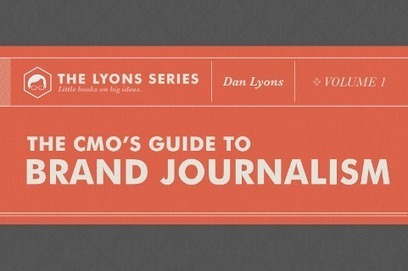
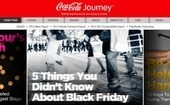

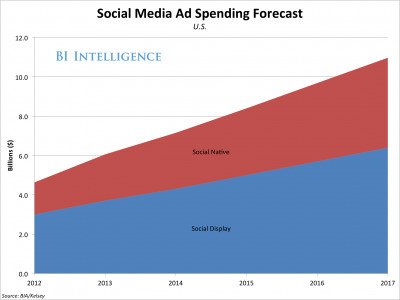
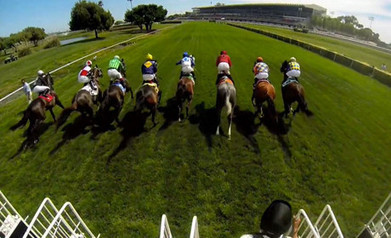

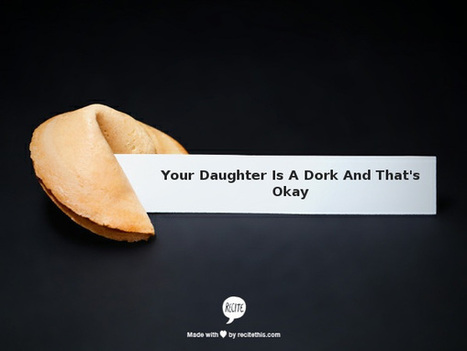


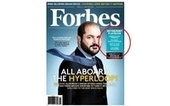



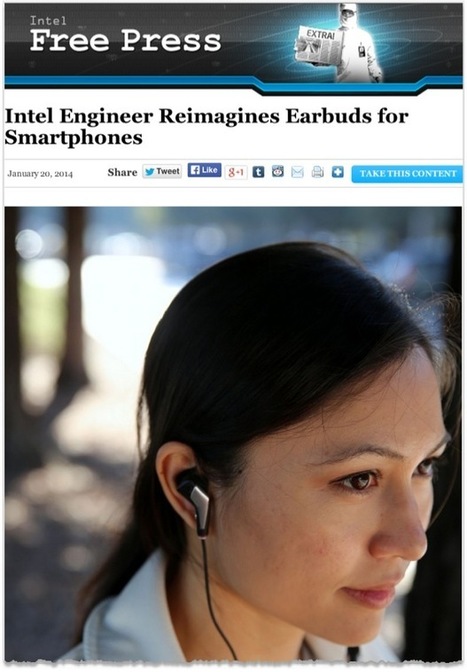


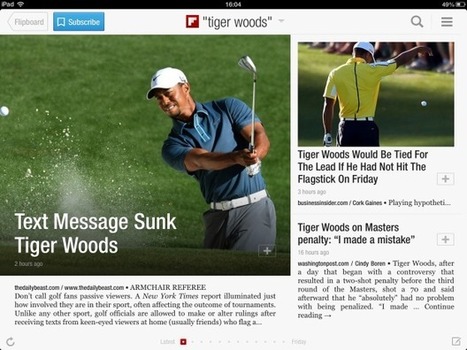







Tom Fishburne offers a thoughtful commentary on brand newsletters, their impact and lack of effectiveness.